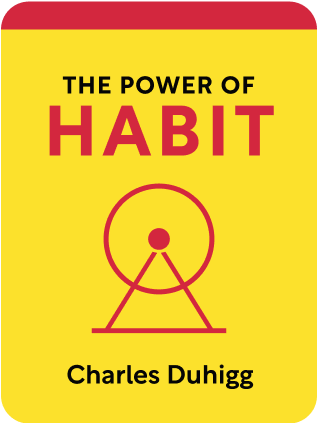

This article is an excerpt from the Shortform book guide to "The Power of Habit" by Charles Duhigg. Shortform has the world's best summaries and analyses of books you should be reading.
Like this article? Sign up for a free trial here .
Do you want to know how to form a habit? How does the system of cravings and rewards help us form habits?
Knowing how to form a habit can help you break bad habits and form good new habits for the future. To make the most of your habits, you need to understand cravings and the reward cycle.
Keep reading to find out how to form a habit.
How to Form a Habit
You now know that the habit consists of a cue, a routine, and a reward. But this is only part of the story. By themselves, the cue and reward would just be considered learning and don’t explain how to form a habit. For example, consider fixing a flat tire on your car. You hear the cue of the flat tire sound, and you feel the cue of the bumpiness of the ride. You have a routine to fix the tire. Then you have the reward of being able to continue on your ride, and the self-satisfaction of handiwork.
But you don’t have a habit of fixing your tire. It’s not something you look do on auto-pilot, daily or weekly.
The final essential component of a habit is craving. A craving is the anticipation of the reward when you get the cue, even before you actually get the reward. This craving pushes you through the routine so that you get the reward at the end of the habit. And if you don’t push through the routine, you don’t get the reward, and the craving is unsatisfied – making you unhappy.
Imagine the habit of ordering fast food from McDonald’s. You get the cue of delicious French fry smell. Before actually going through the routine, you crave the reward – the Big Mac with Diet Coke at the end. This craving pushes you through the completion of the habit’s routine. And if you don’t satisfy this craving by completing the habit, you end up pretty dejected as you instead eat your baby carrots.
This craving makes the cue-routine-reward loop a true habit, rather than just simple learning. This is how to form a habit.
Monkey Brains and Cravings
The seminal work in understanding cravings was done in monkeys. The monkey was set in front of a blank computer screen. Periodically, a colored shape would appear on the screen. The monkey’s job was to press a lever when this shape appeared, and it’d get a drop of grape juice (which the monkey loved).
When measuring activity in the monkey’s dopamine neurons, a predictable pattern appeared – when the monkey got a reward (R), its brain activity spiked, indicating pleasure:
After many iterations of this loop, the monkey got really good at pulling the lever and getting the grape juice. It was good at recognizing the cue, doing the routine of pulling the lever, and getting the reward of juice.
But interestingly, over time, the monkey began anticipating the reward. The brain activity spiked when the cue appeared, well in advance of actually getting the reward:
Notice that the peak area of brain activity happens when the cue is sensed (CS). This is the craving that happens when you sense a cue. The activity no longer appears when getting the reward – in some senses, the brain is no longer pleasantly surprised at getting the reward, it just gets what is expected.
Finally, the scientist tried a different experiment – give the monkey the cue, activate the routine, but give it no reward. Below, you’ll see a spike of activity when the cue is sensed – anticipating the reward, but when no reward actually comes, the brain activity flatlines, indicating disappointment:
This is what happens when you get a cue (like smelling French fries), develop a craving, but end up not satisfying the craving. (Biologically, this serves the purpose of giving negative feedback to the behavioral circuit – if you sense a cue and execute a behavior and don’t get the reward, then maybe in the future you shouldn’t execute the behavior again.) It helps explain how to form a habit.
The spike in activity when you sense a cue is the craving. This craving, this eager anticipation of the reward, kicks your habit into gear – you execute the routine, without even thinking hard about it, so you can get that sweet reward at the end.
Now that you know how to form a habit, you can think about your own habits and what they mean for you.

———End of Preview———
Like what you just read? Read the rest of the world's best book summary and analysis of Charles Duhigg's "The Power of Habit" at Shortform .
Here's what you'll find in our full The Power of Habit summary :
- The 3 steps to change your habits
- Why habits are at the root of success in football
- How social movements are just an expansion of habits from individuals to communities






